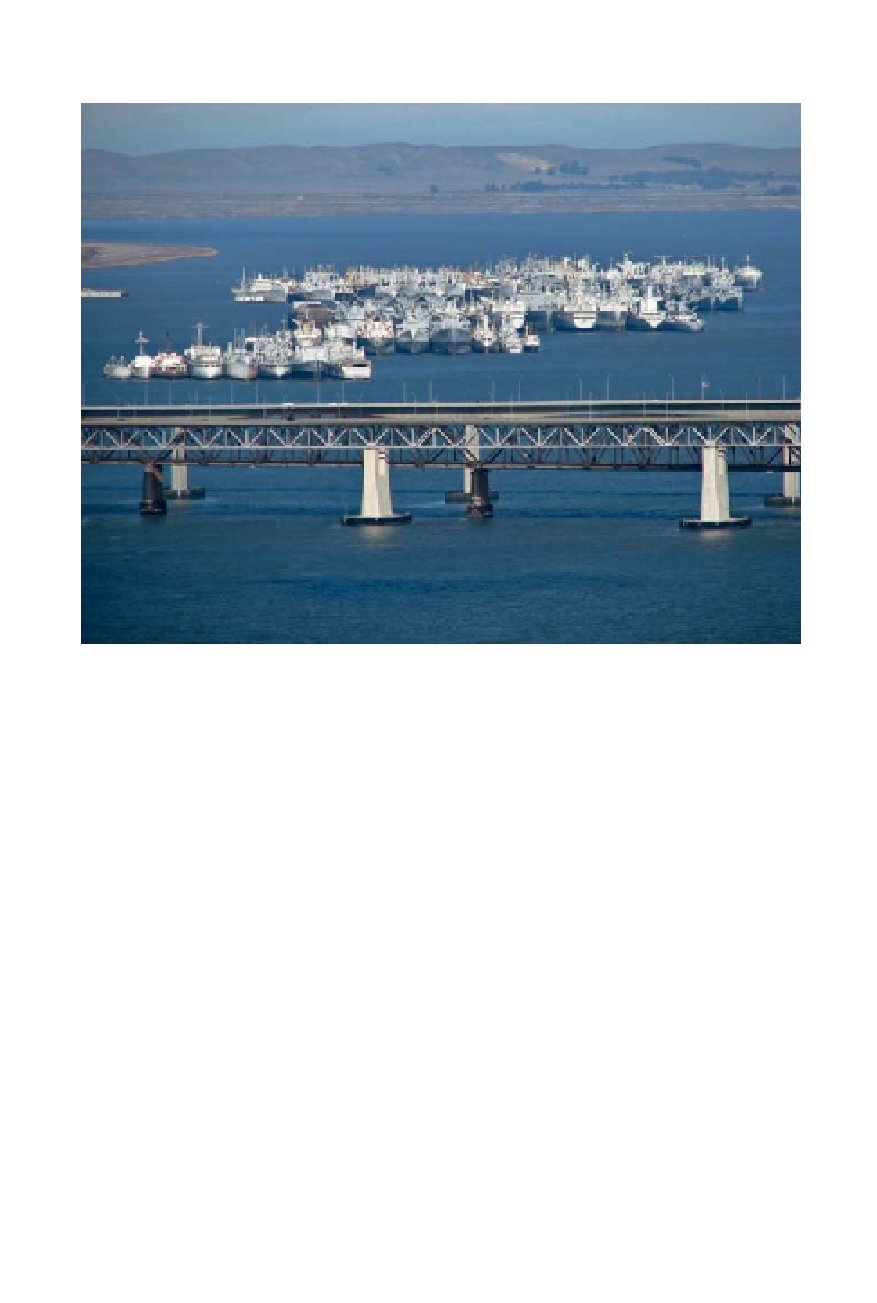Biology Reference
In-Depth Information
The navy's mothball fleet has been a fixture of Suisun Bay for generations, but it is
in the process of being dismantled. Many of these vessels were built in Bay Area
shipyards or had served as part of the Pacific fleet. (Max Eissler)
some still eked out a living from the bay itself. Fishing occupied the lives
of a dwindling number of people, and focused on fewer species. Every
commercial catch required a permit and couldn't exceed a state-set limit.
Dredgers still mined sand from the bay floor and deepened the berths of
the region's six major ports to accommodate the new container ships com-
ing into Oakland and the new supertankers coming into Richmond, and
to clear the Gold Rush sediments still creeping downstream 100 years
later. Workers still scraped salt crystals off the bayshores to fill cardboard
cylinders in kitchen cupboards.
Upstream in the delta, agriculture continued to thrive, but years of cul-
tivating delicate wetland soils spurred the sinking of diked islands farther
below sea level. Farmers had to shore up dikes and expand drainage sys-
tems. Farther afield in the drier valleys, growing crops required more in-
puts of water and chemicals, as well as tile drains to remove salty irrigation
water. Demand for water grew neck and neck with the state's population,
resulting in another network of pipes, canals, ditches, dams, and pumps
being laid down over the already extensive water infrastructure built in
the first half of twentieth century.

